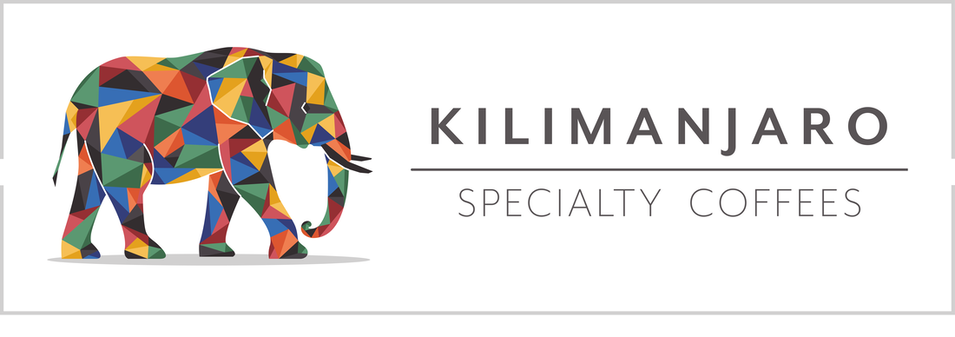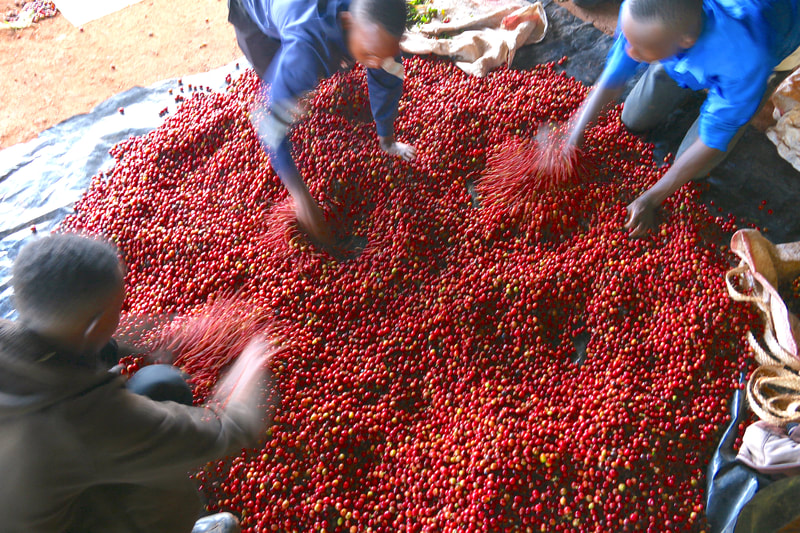KENYA MUGAYA AB
General Information
|
Origin: Kenya
County: Kirinyaga Cooperative: Mutira FCS Washing Station: Mugaya Factory Farmers: 924 active members (369 female, 555 male) Cultivar: SL28 - SL34 - Ruiru 11 - Batian Altitude: 1570 masl Process: Fully washed with double fermentation Harvest: November 2023 - January 2024 Cherry Price | FOB Price: 5,72 USD/kg | 9,70 USD/Kg Screen | Moisture | Density: 15-16 | 10.9% | 0.702 g/ml Packaging: 30 Kg VP box Score: 86.1 Notes: Apricot, caramel, lime, tangerine |
TRACEABILITYThe Mugaya factory was established in 1975 under the Mutira Farmers’ Cooperative Society and is situated in Kirunda sub-location, Mutira location, Kerugoya division, in Kirinyaga County. The factory serves 924 active members, each owning an average of 200 coffee trees. The primary coffee varieties cultivated at Mugaya include SL28, SL34, Ruiru 11, and Batian. Positioned at an elevation of 1570 meters above sea level, the Mugaya Coffee Factory is characterized by its red-volcanic soil and a temperature range of 12-26°C. Additionally, it receives an annual rainfall of 1,100mm, contributing to its lush topography and substantial coffee production.
After being picked, ripe cherries are brought to the factory by smallholder farmers. The cherries then undergo processing to remove the skin and pulp, a method known as wet processing. The factory uses a disc pulper to remove the skin and fruit from the inner parchment layer that protects the green coffee bean. After the coffee beans are pulped, they undergo an overnight fermentation process to break down the mucilage. The beans then travel through channels to a soaking tank where they are carefully cleaned, soaked, and finally spread out on raised drying tables. The duration of the drying process on the tables varies depending on the local climate, ambient temperature, and the total volume of production being processed. Typically, drying can range from 7 to 15 days. Throughout this stage, it is important to consistently turn and sort the produce to ensure even drying and quality. HOW DO WE SOURCE OUR COFFEES?We have lost count of the number of cupping sessions involved in the coffee selection process in Kenya. This process lasts several months and includes a series of quality control measures. In simple terms, the coffees we select undergo five main selection procedures before reaching your roastery.
Journey to Origin: This process begins with a visit to cooperatives and a meeting with coffee producers and exporters at origin. Two trips are made; one during the harvest, where no cupping takes place, and another approximately a month when the harvest ends. During this last trip, we cupped around 500 samples per week, which is a pretty intense process. Here the pre-selection is carried out. Offer Samples: Producers, cooperatives or exporters send us samples of the lots that we have pre-selected at origin. This is beneficial because it allows us to analyze a smaller number of samples in the comfort of our laboratory in Budapest. Once we have made our final selection and are satisfied with it, we proceed to sign the contract. PSS stands for pre-shipment samples. After signing the contract, the coffee producer processes each lot and sends a sample to our laboratory for quality control confirmation before shipping. Arrival samples. Once the coffee arrives at our warehouse in Barcelona and passes all the necessary customs and phytosanitary regulations, we will take representative samples from each of the lots and analyze them again. This is to ensure that the coffee has arrived in perfect condition. We will test and examine the samples carefully to ensure that they meet our quality standards. The final stage of our selection process involves sending coffee samples to your roastery. This stage culminates with your cupping and selection of the coffee. Our aim is to provide you and your customers with the opportunity to enjoy the richness of our selection. We hope that you will appreciate the quality of our coffee and that it will enhance your business. THE MYTHS OF KENYAN COFFEE1.- There is a misconception that Kenyan coffees are too acidic and unsuitable for use in espresso or milk-based drinks. However, this is simply not true. The acidity level of a coffee can be controlled by adjusting the roast profile. Although some coffees have a higher natural acidity, this can always be reduced by roasting if necessary.
2.- It's common to hear that Kenyan coffees have a specific flavour profile that includes red fruits, blackcurrants, and winey notes. However, this is just a myth. In reality, there is a wide range of flavours that can be discovered in Kenyan coffees, including floral, chocolate and elegant notes that are influenced by the variety of the coffee and the location where it's grown, rather than the origin in general. 3.- There is a popular myth about the new Ruiru 11 coffee variety. The truth is that Ruiru 11 is not as good as the SL varieties. However, most of the Ruiru coffee grown in Kenya is now grafted with SL28 roots. This is because the SL28 roots are longer than those of the original Ruiru, which has a Catimor genetic component. Grafting the Ruiru plant with SL28 roots allows it to access more nutrients from deep in the volcanic soil of Kenya, which ultimately improves its quality. 4.- Finally, there is a common myth that farmers do not drink coffee, but prefer tea. While there is some truth in this statement, it is mainly due to British colonial influence. Today, Kenyan farmers actively enjoy coffee and even cup it. |
WHY FARMERS ARE ABANDONING COFFEE?
MUGAYA FACTORY LOCATION
|
WHERE WE ARE
Barcelona, Spain Santiago, Chile Budapest, Hungary |





